 Shaping Successions
Shaping Successions
 Advancing Governance
Advancing Governance
 Discovering Leaders
Discovering Leaders
 Developing Leadership
Developing Leadership

Firstly, we explore the trends within the GBDT data: this includes 16 of the top 40 organizations according to the study’s MarCap requirements. We then look at the Top 40 in its entirety—in both cases assessing factors such as ethnicity, gender, age, international presence, and average board tenure. For easier reading from here on, organizations with a MarCap exceeding €8 billion will simply be referred to as large-cap companies.
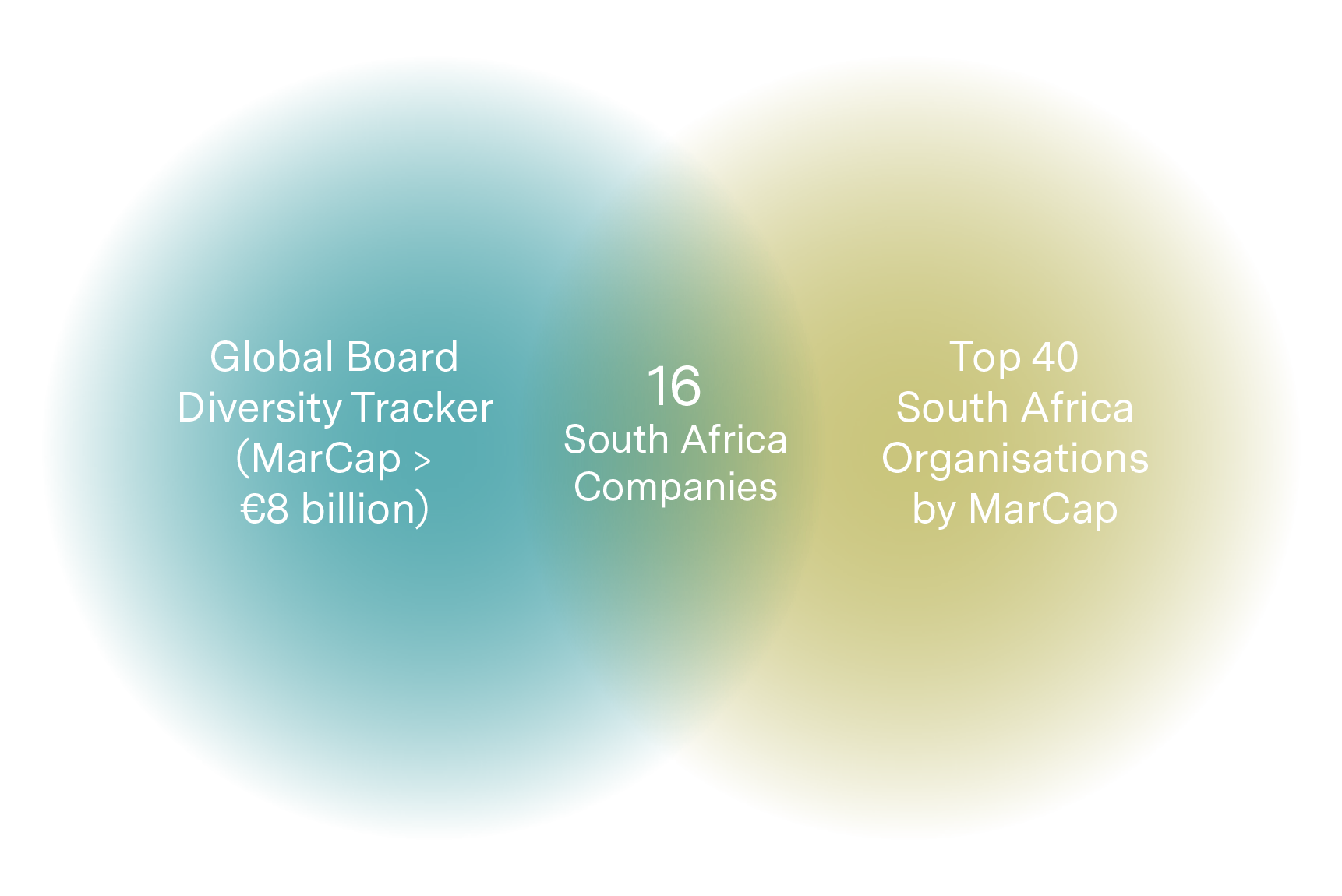
South Africa has exhibited an impressive and sustained commitment towards board diversity, becoming a pioneer on the global stage. By 2020, according to the GBDT, it stood as one of only 13 countries where all large-cap firms boasted at least two female directors, while 89 percent had three—a significant milestone. Today, all of these companies have at least three women on board, reaching a critical mass for positive impact according to our research.
The country’s progress extends beyond female representation to a wide diversity landscape, ranking high on the global scale. This is primarily attributed to the national Broad-Based Black Economic Empowerment (BBBEE) policy, which promotes a workforce and leadership that mirrors demographic diversity across race, gender, and disability. This policy has been a cornerstone in the national drive towards inclusiveness, affecting various business aspects including management control, ownership, skills development, enterprise, and socio-economic development.
By fostering diversity in the boardroom, an organization not only heightens its competitiveness but also improves its working conditions for employees. This study sheds light on South Africa's accomplishments, the challenges it faces, and its potential trajectory in cultivating an even more inclusive corporate landscape. The current question is whether this pace of change is maintaining momentum or facing a decline, and how diversity metrics compare to global standards. We should note, though, that this article will not explore whether the current level of diversity and momentum is sufficiently diverse to be representative of local demographics.
South Africa is consistently ahead of the global curve with 37 percent of large-cap board seats currently held by women—a full 10 percentage points ahead of the global average of 27 percent. And its progress is accelerating—three years ago, it had a six percentage-point lead on the global average of 23 percent.
We rated South Africa as a gender diversity champion in 2020, and progress has continued. To earn champion status, at least 60 percent of large-cap boards must have at least one woman and a minimum of 30 percent must have two. Additionally, more than 18 percent of new appointments must be female. Since then, gender diversity has only improved at the board level, with female representation increasing by 50 percent, compared to an average global increase of 30 percent. The average South Africa large-cap board now includes 4.9 women, compared to 3.3 in 2018.
At the same time, South Africa boards shrunk from 14.9 to 13.5 directors over the past five years. Currently, 13 percent of South African directors are newly appointed each year—60 percent of whom are female. Should these trends persist—and keeping all variables consistent—South Africa boards should reach gender parity by 2025.
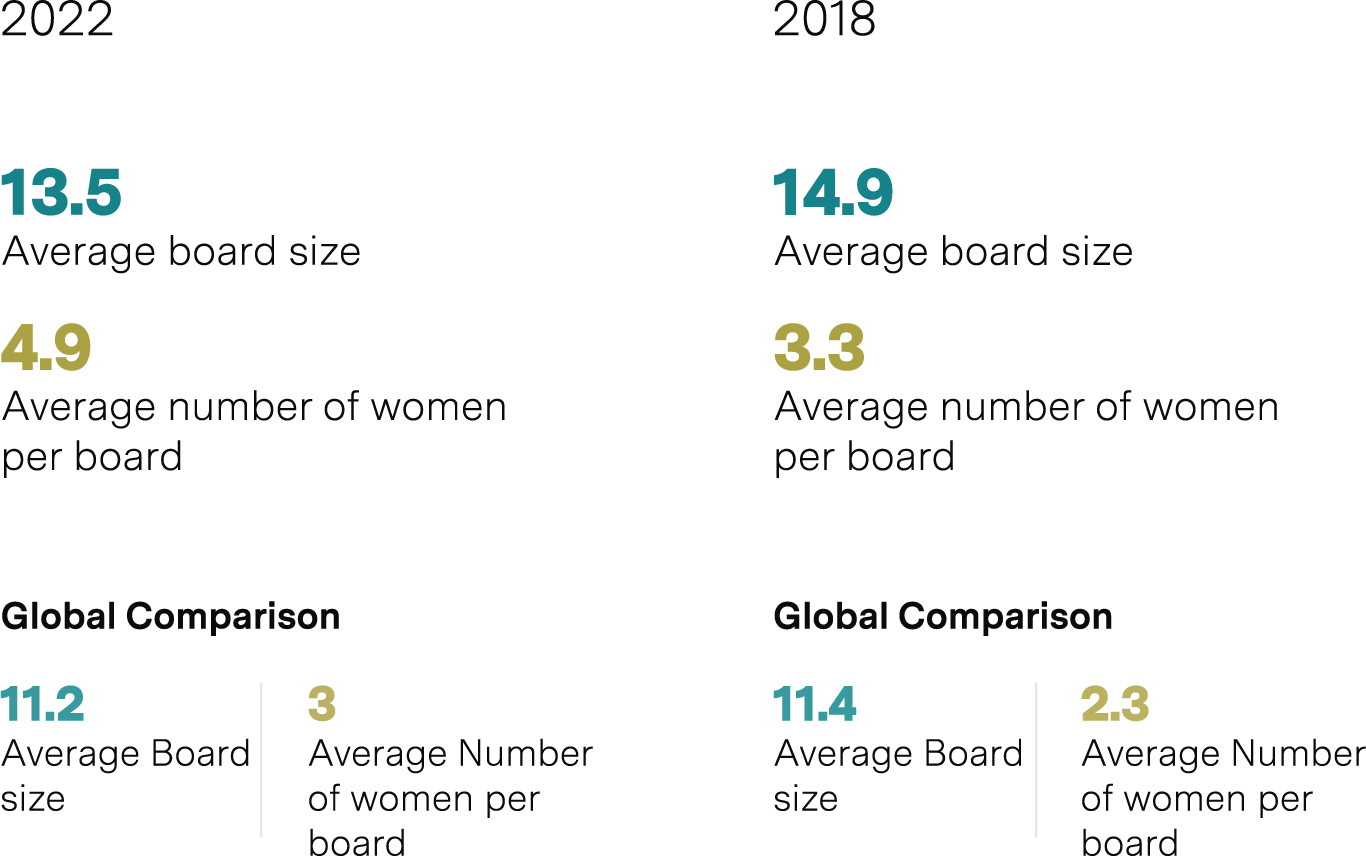
Local boards are more likely than their global peers to appoint female CEOs and CFOs. While only 14 percent of large-cap CEOs in South Africa are women, this is still more than double the global average. Women are particularly likely to hold CFO roles, currently holding almost half (42 percent) of these positions—24 percentage points above the global average.
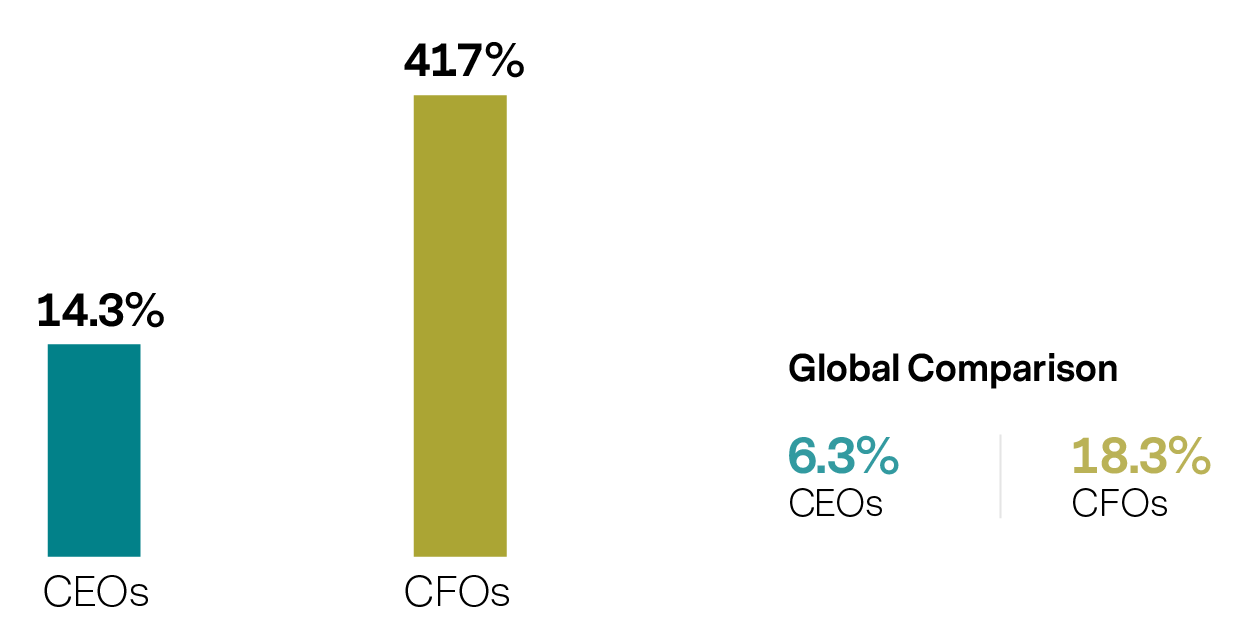
South Africa is also excelling in female representation in both executive and non-executive director roles. Women hold 28 percent of executive director and 39 percent of non-executive director roles—roughly 18 and 8 percentage points higher than the global average, respectively.
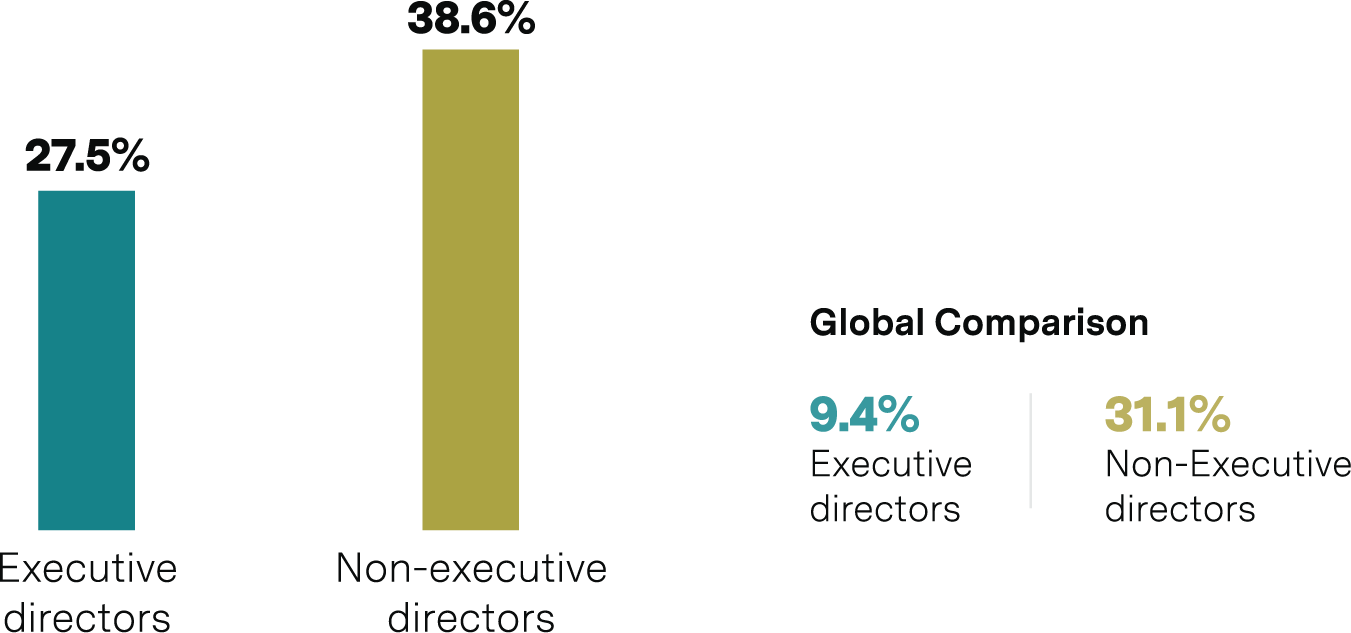
The inclusion of international directors enhances boardroom diversity, introducing unique perspectives and skills. The number of international directors on local boards has increased by 5 percentage points in the last four years. Currently, South Africa is on par with the global average for the number of international directors, which stands at 25 percent.
There has been a notable change in the proportion of female international directors on South African boards in the last four years, reflecting a 7 percentage-point increase. However, although the trend is moving in the right direction, South Africa still lags behind the global average.
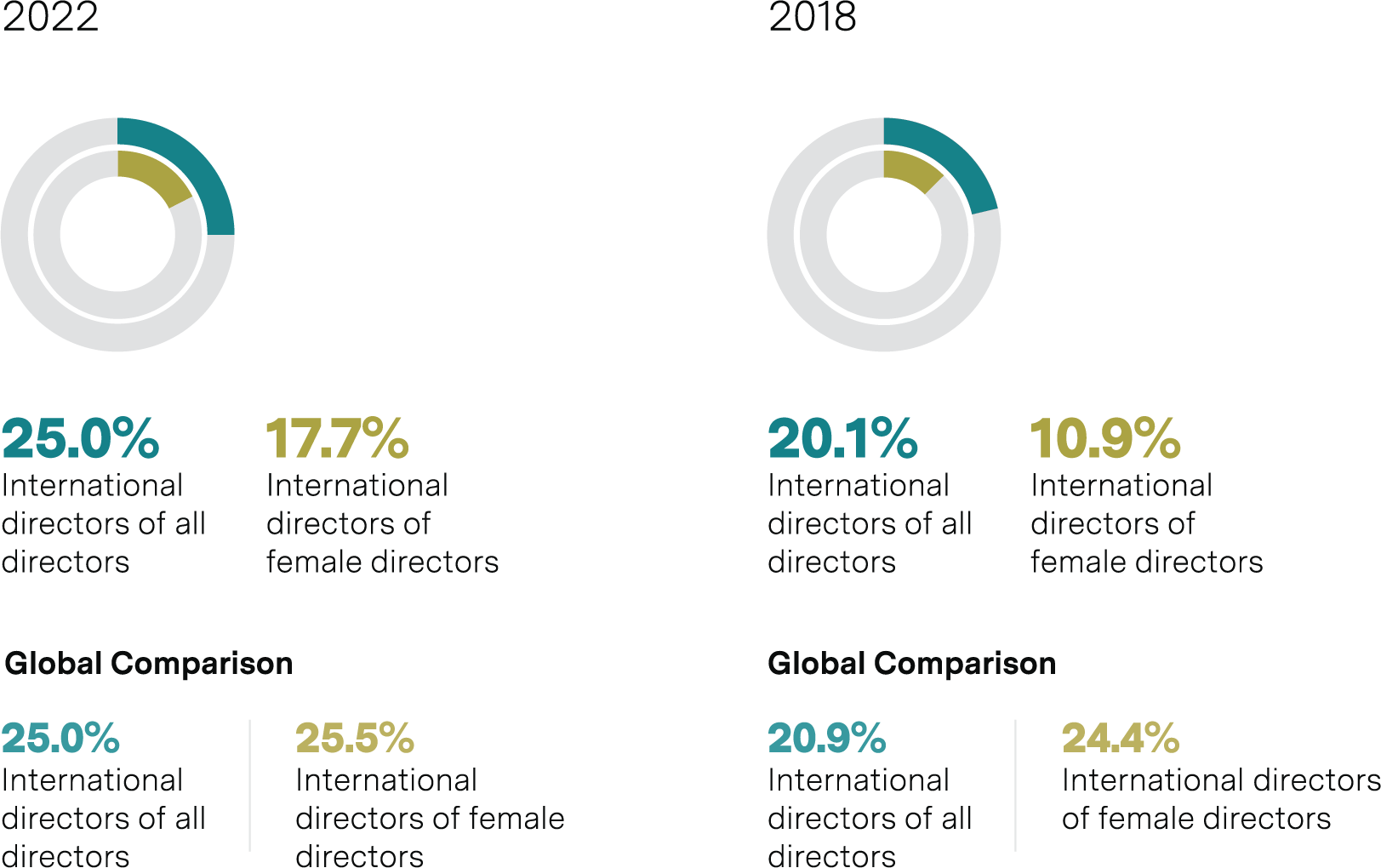
The GBDT data reveals that since 2018, the average age of South African board members has risen slightly. Men are typically older than women on boards, but the average age gap between the genders has narrowed, from a 7.1-year difference in 2018 to a 5-year difference in 2022. Over the past four years, the average age of male board members has remained the same, while female directors have become, on average, 4 years older.
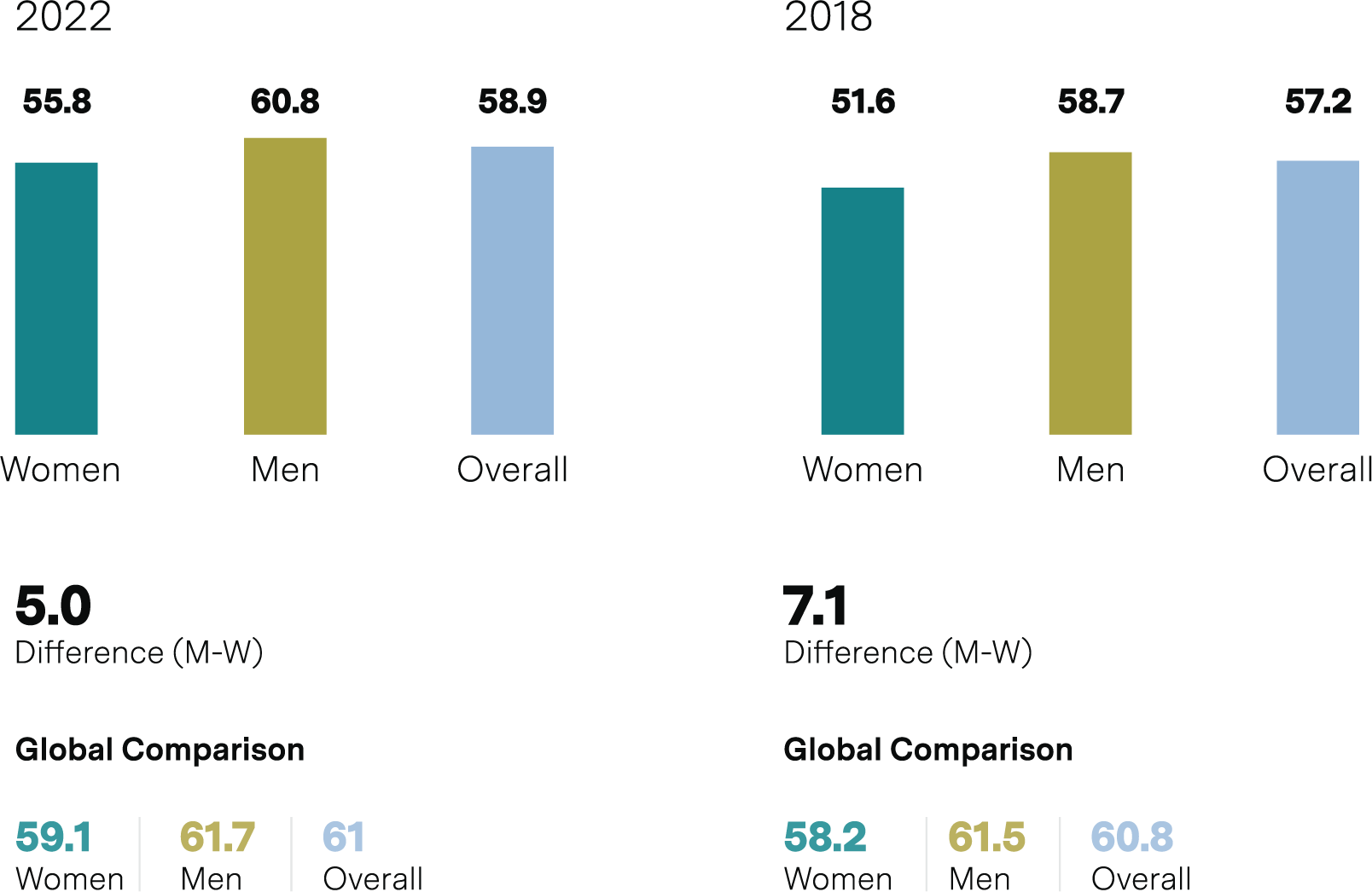
While local boards are becoming more international, attracting a wide array of perspectives and experiences, a shortfall in foreign female representation persists. As this shift toward greater internationalization continues, the focus must be on harnessing this momentum to draw in more diverse, global female leadership talent, thereby further enriching boardroom dynamics.
South Africa's corporate sectors—including consumer, financial services, industrial, and telecommunications and media (T&M)—offer intriguing insights into board diversity. Local boards fare well compared to other countries in terms of ethnic representation, with 44 percent of top-40 board seats held by ethnic minority groups compared to the 22 percent average seen in S&P 500 corporations. Ethnic diversity is highest in the T&M sector at 55 percent, with an 11-percentage point lead above the sector average. Additionally, this sector includes far more international board members (32 percent), standing 15 percentage points above the sector average.
When it comes to gender representation, the industrial sector leads with an average of 39 percent of board seats being occupied by women. But the distinction is subtle, as the average number of women in this sector only slightly surpasses the cross-sector average.

The debate around director tenure revolves around two perspectives. On the one hand—without conscious consideration of tenure—progress in diversity can be hindered as directors remain in their positions, potentially leading to outdated ideas and ineffective boards. Boards must embrace change, technological advancement, and diversity which can be challenging when new members are not appointed. On the other hand, long-tenured directors can offer valuable contributions to an organization.
The King Committee on Corporate Governance in South Africa recommends a nine-year tenure for independent, non-executive directors. Exceptions can be made to this guideline, but a stringent assessment should confirm that the director continues to exercise objective judgment. In South Africa, 20 percent of the top 40 biggest corporations have average tenures that exceed this recommendation.
The T&M industry leads with an average tenure of four years, while the consumer sector lags most with 40 percent of these companies having tenures in excess of nine years—double that of the top 40 average. As noted earlier, the T&M sector also leads in overall board diversity. It is perhaps unsurprising that there exists a strong and positive correlation between board turnover and overall diversity.
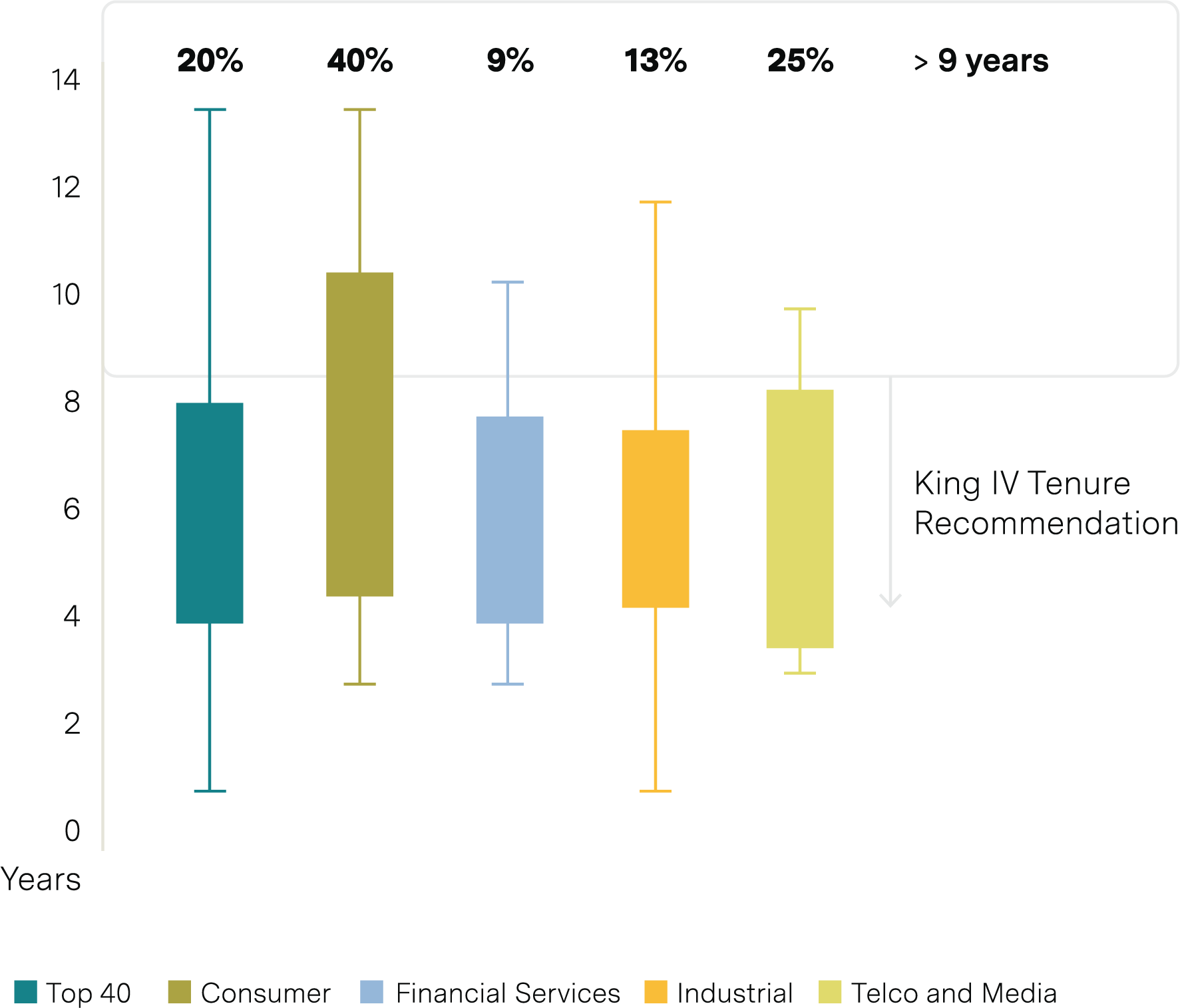
A prominent firm in South Africa's consumer sector maintains an average board tenure of 17 years, with 80 percent of the board serving for more than nine years. In contrast, 40 percent of boards within the consumer sector have all members serving fewer than nine years, adhering to the King IV Committee's recommendation. This is one example where a South African corporation has the potential for growth towards a more diverse and perspective-rich boardroom.
South African boards stand as frontrunners in diversity, displaying remarkable progress and actively driving sustainable, long-term shareholder value. As companies navigate this evolving landscape, the next steps involve championing diverse leadership, innovative committee creation, and alignment with environmental, social, and corporate governance (ESG) principles.
In this endeavour, chairpersons play a pivotal role. By embodying the spirit of diversity and inclusivity, they can catalyze meaningful change from the top. They shoulder the responsibility of nurturing an open and collaborative environment, one that balances biases and encourages every director to contribute fully. It's through these actions—like revising board charters to include clear language on inclusion—that chairpersons can ensure each boardroom is a hotbed for fresh ideas and innovative solutions.
Additionally, the creation of board committees in areas like technology, sustainability, governance, diversity, and management development is gaining momentum. These groups are instrumental in ensuring the continued innovation and sustainability of corporate leadership. Concurrently, the focus on ESG strategies underscores the commitment to long-term value creation.
Reflecting on the progress made in diversity and inclusion, there are clear milestones, such as Judge Edwin Cameron's landmark victory in the 1990s that decriminalized homosexuality in South Africa. This paved the way for greater LGBTQ+ rights, such as marriage or civil unions, and the banning of unfair discrimination based on identity and sexuality. Despite the notable progress made thus far, the representation of LGBTQ+ individuals on boards largely remains undisclosed, potentially signaling an ongoing lack of full acceptance within boardrooms. The focus now should be on a broader and more inclusive understanding of diversity.
It's through such nuanced and multifaceted diversity efforts that local boards can not only pave the way for a more inclusive and diverse corporate future but also set a robust global example for others to follow. The frontier of diversity and inclusion in the boardroom is far-reaching, and South Africa's commitment to embracing this journey is indeed commendable.
You are switching to an alternate language version of the Egon Zehnder website. The page you are currently on does not have a translated version. If you continue, you will be taken to the alternate language home page.
Continue to the website